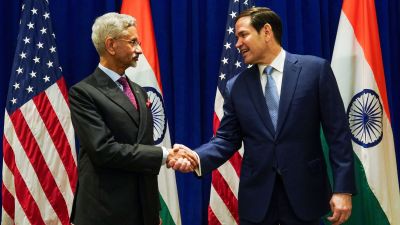AAFI: Dealing in contradictions
The Amateur Athletic Federation of India’s action against six of the eight athletes who tested positive for taking steroids or stimulan...

The Amateur Athletic Federation of India’s action against six of the eight athletes who tested positive for taking steroids or stimulants at the Hyderabad National Games is in ‘contradiction’ with the code of the World Anti Doping Agency (WADA) adopted in Copenhagen earlier this month.
The Indian Government was among the 28 nations who pledged in Copenhagen to sign the declaration at ‘‘a later stage.’’ Under the code, any sportsperson who tests positive for the first offence faces a two-year ban and the second violation would attract a life ban.
| AAFI action | ||
|
Jagdish Basak, Alapatti Kalyani and Pampa Chanda (All banned for 2 years for testing positive for nandrolone) |
||
However, the AAFI has slapped a two-year ban on 21-year-old Jagdish Basak of the Border Security Force (Jalandhar) under the outdated IOC rules. He tested postive for nandrolone. At the same time, the Rowing Federation of India (RFI) had suspended Chandigarh rower Lakshman Singh for the same offence, without a probe.
How the IOA deals with this inconsistency will be known on April 23 when it formally announces the names of the disgraced athletes. But the AAFI is keeping mum on one of the names who may face a life ban for being tested positive in two successive National Games, first in Punjab and later in Hyderabad. It may be recalled that 19 cases of positive dope tests were reported in the Punjab edition.
The AAFI has announced that decisions on Maharashtra’s Kavita Pandya and one-lap runner and 400m hurdler Udayalakshmi, will be taken after its probe is complete. Both have tested positive for nandrolone. The AAFI has reportedly found some discrepancies in their test results.
The AAFI chose to take a lenient view in cases of Punjab Police thrower Ramandeep Singh and triple jumper Sukhjinder Singh, both of Chandigarh, Railway’s long jumper Maha Singh (Haryana) and Andhra Pradesh’s discus thrower Haridayanand Singh were let off with a warning.
Dr Manmohan Singh, chairman of the IOA Medical Commission, said, ‘‘By April 23, the reports will be available. There is always a possibility of a slight variation in A and B samples. However, if there is a glaring discrepancy, we will discuss it and take a final decision.’’
Photos


- 01
- 02
- 03
- 04
- 05





























